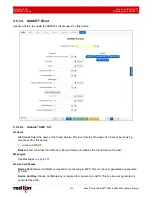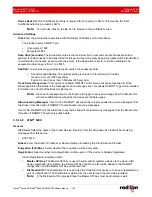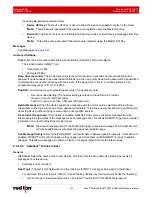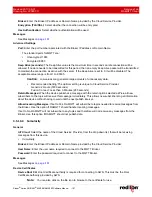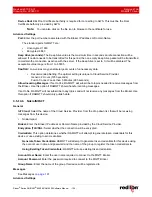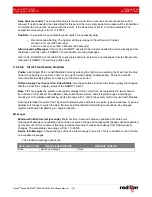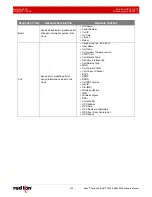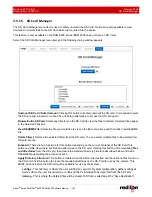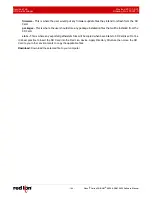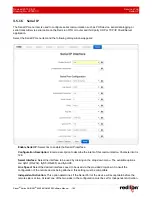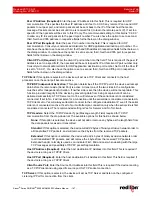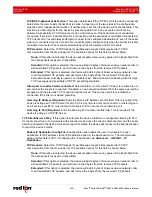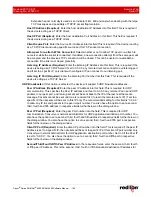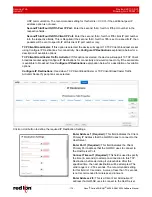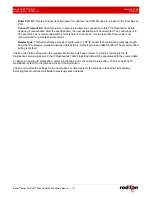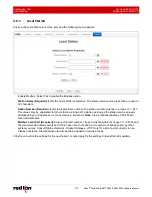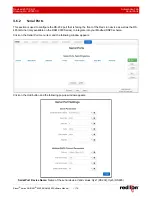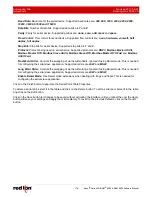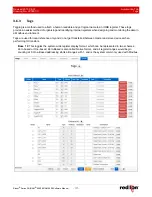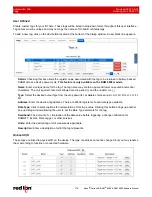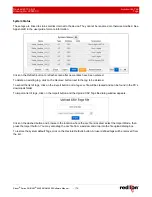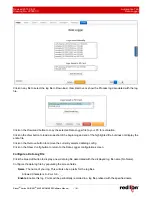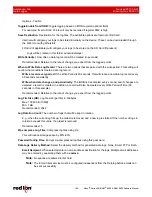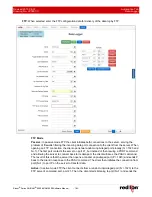
Services Tab
Revised 2017-08-31
Serial IP
Drawing No. LP0997-C
- 168 -
Sixnet
®
Series SN/RAM
®
6000 & RAM 9000 Software Manual
TCP/UDP Independent Activation:
This option determines if the TCP/IP port of the device will accept
data before the remote side (Serial Port) is active. At least one of the two sides in the configuration
must be set for Independent Activation. If neither side is set, then the device will not accept data. This
function provided integrity for the device by preventing data from being accepted until it can be
delivered successfully. A TCP Server set to Yes, will listen even if the serial side is not considered
connected, If set to
No
, it will not listen for a connection until the serial side is considered connected. A
TCP Client set to
Yes
will always attempt to connect to the configured destination IP, even if the serial
side is not connected or active. If set to
No
, it will attempt a connection only when the serial side is first
considered connected. The recommended setting is
Yes
for Servers and
No
for clients.
TCP Headers:
Select the TCP/IP Header Type (Message Length Field) required for TCP/IP
communication from the drop-down list. The available options for this field as shown below.
None:
If this option is selected, the device will not add or remove any bytes as the length field from
the data packets received or transmitted.
Standard:
If this option is selected, the device will add 2 bytes of binary exclusive network order to
all transmitted TCP packets, and will remove the 2 bytes from the received TCP packets.
Extended:
If this option is selected, the device will add 4 bytes of binary exclusive network order
to all transmitted TCP packets, and will remove the 4 bytes from the received TCP packets.
Extended header normally is used as an indicator First, Mid and Last when dealing with the large
TCP messages and possibility of TXP/IP packet fragmentation.
Allow peer to re-attach while connected:
Select whether or not to allow TCP peer to re-attach to our
server while the socket is connected. If enabled, a new connection attempt from the same peer will be
accepted, and the previous TCP connection will be closed. This can be useful to re-establish a
connection if the link is not closed gracefully.
Listening IP Address (Required):
Enter the listening IP Address into this field. This is required if the
device is acting as a TCP/IP Server. If set to 0.0.0.0 any remote client can connect to our listening port,
and if set to a specific IP, only client with configured IP can connect to our listening port.
Listening IP Port (Required):
Enter the listening Port number into this field. This is required if the
device is acting as a TCP/IP Server.
TCP Client/Server 2 Way:
If this option is selected, the device will listen on configured Listening IP Port
for client connection to communicate with serial device and once the client is disconnected, and the serial
device connected to the ttyS1 port needs to report it’s status, the device will connect to the host destination
to report the device’s status.
Enable IP Destination Config File:
Enabling this option allows the user to configure the host
destination IP/Port address via the IP Destination option in the Advanced menu. The recommended
setting for this field is
YES
, if configuring the IP destination via
Advanced
→
GWLNX
→
IP
Destination
.
TCP Headers:
Select the TCP/IP Header Type (Message Length Field) required for TCP/IP
communication from the drop-down list. The available options for this field as shown below.
None:
If this option is selected, the device will not add or remove any bytes as the length field from
the data packets received or transmitted.
Standard:
If this option is selected, the device will add 2 bytes of binary exclusive network order to
all transmitted TCP packets, and will remove the 2 bytes from the received TCP packets.
Extended:
If this option is selected, the device will add 4 bytes of binary exclusive network order
to all transmitted TCP packets, and will remove the 4 bytes from the received TCP packets.

